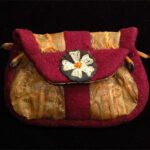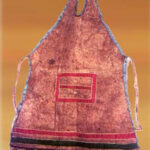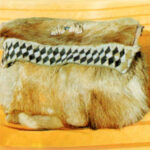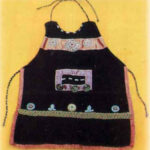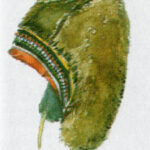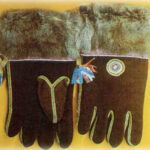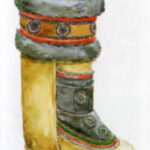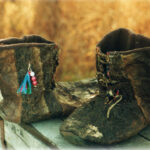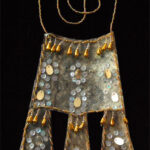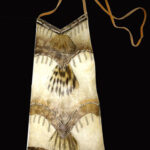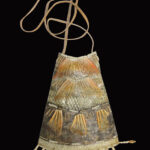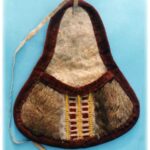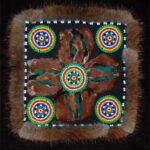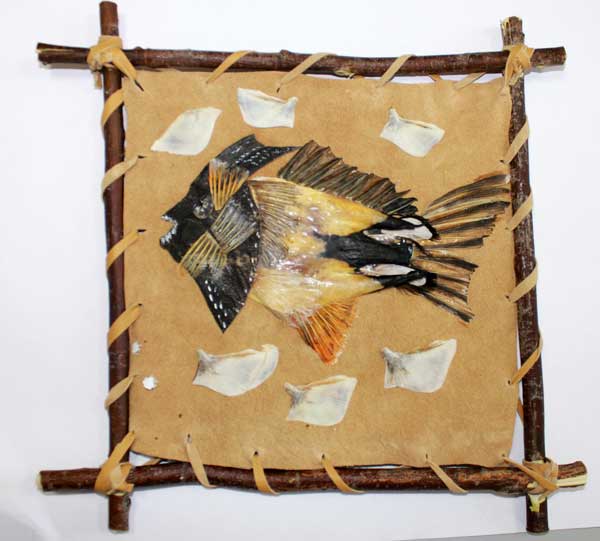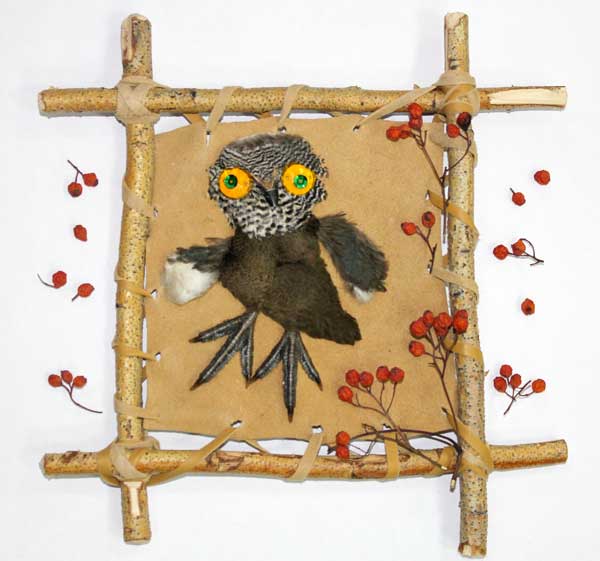
Schoolchildren of the Nelemnoye village dance the Yukaghir national dance
Filmed by Pavel V. Sofronov
Общие сведения
The Yukaghirs are one of the most ancient peoples, in the past widely settled in the Asian northeast. Numerous evidences of their Art activity have survived since the ancient period, there are primarily rock paintings painted by red ocher, decorated Neolithic pottery, ornamented bone crafts, necklaces, beads, etc.
Monumental rock paintings along the northern rivers convey the realistic look of game animals. Elk figures prevail among them.

Images of people appeared on the writings of the region in the Neolithic period, these are sharp-horned anthropomorphic fantastic figures, and some have three-fingered hands and feet. Single human or groups were drawn and sometimes in compositions with animals or other creatures.
During the Neolithic, Bronze and Early Iron Age, household items were decorated with geometric patterns. Thus, rows of carved, comb-like ornaments, through holes, molded rollers, etc. are applied on the sides and body of clay vessels. The ornament was located along the upper part of the vessels. The bottom was rounded to conveniently put on a fire.
During the early Iron Age, the traditions of the application of rock paintings and the production of ceramics faded among the aboriginal tribes. What caused this remains to be seen by scientists. It is difficult to characterize this stage in the development of the Yukaghir arts and crafts.
Pioneer of Russian Yukaghir studies, political exiled Vladimir Iokhelson (1855–1937) carried out research in the Kolyma area. He collected a significant collection of items characterizing the decorative and applied art of the forest Yukaghir hunters of the upper Kolyma. Here is a fragment of a chapter from his voluminous monograph “Yukaghirs and Yukagirized Tungus”. The book was first published in English in New York in 1926. The researcher paid special attention to the unique pictographic writing on birch bark. (ссылка на книгу)
В.И. Иохельсон. Искусство и пиктографическое письмо (из книги «Юкагиры и юкагиризированные тунгусы». Новосибирск: Наука, 2005. С. 610–632)
The pictographic writing of the Upper Kolyma Yukaghirs fell out of use at the beginning of the 20th century with the establishment of Soviet Union, literacy spread among the population of North Asia, modern stationery appeared, and there was no need for such writing material as birch bark.
In a semi-nomadic life, the aboriginal tribes carried only important and necessary things. Yukaghir women are great craftswomen in the manufacture of bags, clothing, household items, and quivers for arrows. They sewed hare blankets, covers of portable dwellings from leather.
However, by the end of the 20th century a crisis situation raised in the field of applied arts: the art of sewing from natural materials – fur, skins, skins of animals, birds and fish, which had been transmitted from generation to generation for centuries, was on the verge of extinction.
Works of the craftswoman Akulina V. Sleptsova

Currently, among the forest Yukaghirs of the upper Kolyma, several craftswomen are engaged in sewing clothes, bags, rugs, souvenirs, among them the most famous is Akulina Vasilyevna Sleptsova (1930–2010). The samples of swinging clothes made by her are kept in museums in St. Petersburg, Vladivostok, Magadan, Yakutsk; her numerous products are used to illustrate scientific and educational literature. Akulina Vasilievna learned her skills from her mother, Yukaghir woman M.N. Dyachkova. Akulina Sleptsova was a permanent consultant on language, folklore and material culture in Nelemnoe high school.
Works of L.N.Dyomina
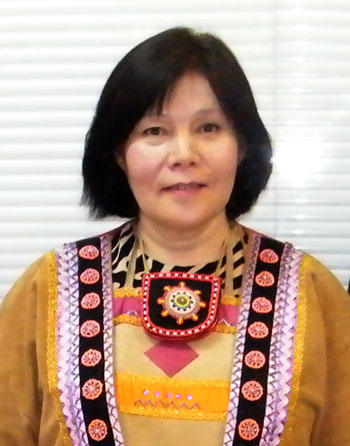
Participant of many exhibitions of applied arts of the peoples of the North in Moscow, Leningrad, Yakutsk, Zyryanka of the Verkhnekolymsky district of the Republic of Sakha (Yakutia) is Lyubov Nikolaevna Demina.
Сумочки
Нагрудные украшения (кожа и плавники рыб, бисер, блёстки)
Сумочки из лап птиц (замша, бисер, плавники рыб)
Сумочки-индиргии
Коврики из птичьих шкурок (замша, мех, бисер, кожа)
Коллажи
The works of the Upper Kolyma craftswomen perfectly illustrate the current state of traditional arts and crafts. Craftswomen make individual items of summer and winter women's, men's, children's everyday and fishing clothes, headdresses from rovduga and fur, shoes, mittens and gloves, skillfully sew women's handbags for needlework and small indyirga handbags from fish and bird skin (swan, goose) , breast jewelry.
Резьба по дереву
Contemporary arts and crafts of the forest Yukaghir include woodcarving. In 1990-1991 V.G. Shalugin, resident of Nemnoe village, an expert on the language and national culture made six cult anthropomorphic figures (poplar, talnik), the height of the items is 15–20 cm.

According to the outline of the head, they are divided into three groups: sharp-headed (b), round-headed (a, c, e, f), horned (d). The same is the division according to the shape of the base: with a flat, sharp and forked end. The home guardians (a, b) have pronounced archaic features. The child's guard (c) was stuck with a pointed end into the ground near the headboard. He was made round-headed and smiling.
The fishery guard (d) has an anthropomorphic mask crowned with moose horns, the entire lower amorphous carved surface is covered with carvings of animals, birds, and hunting tools.
The receptacles for the spirits-helpers of women (d, f) had a utilitarian purpose; they were used as pan holders. For this purpose, legs are sculptured in the lower part in the form of a grip. Collection of items made by V.G. Shalugin, demonstrates the variety of forms of small cult plastics of the odoles of the late XX century.



к.и.н. Л.Жукова
текст и фото по книгам “Одежда юкагиров: генезис и семантика”, 2009
“Декоративно-прикладное искусство лесных юкагиров Верхней Колымы”. 2011
Literature
- Алексеев А.Н. Древняя Якутия: неолит и эпоха бронзы / Серия «История и культура Востока Азии». – Новосибирск: Из-во ИАиЭ СО РАН, 1996а. – 144 с.
- Жукова Л.Н. Одежда юкагиров: Учеб. пособие. – Якутск: Якутский край, 1996б. – 143 с.
- Жукова Л.Н. Языческое миропонимание и XXI век. – Якутск: Изд-во ЯГУ, 2001б. – 55 с.
- Жукова Л.Н. Одежда юкагиров: генезис и семантика”, 2009. –
- Жукова Л.Н. Декоративно-прикладное искусство лесных юкагиров Верхней Колымы, 2011. – 25 c.
- Иохельсон В.И. Юкагиры и юкагиризированные тунгусы. Пер. с англ. В.Х. Иванова и З.И. Ивановой-Унаровой. – Новосибирск: Наука, 2005. – 675 с.
- Кочмар Н.Н. Писаницы Якутии. – Новосибирск: Изд-во ИАиЭ СО РАН, 1994. – 263 с.
- Окладников А.П., Запорожская В.Д. Петроглифы Средней Лены. – Л.: Наука, 1972 – 271 с.
- Семенова Т.С. Народное искусство и его проблемы. – М.: Советский художник, 1977. – 246 с.
- Федосеева С.А. Ымыяхтахская культура Северо-Восточной Азии. – Новосибирск: Наука, 1980. – 224 с.













